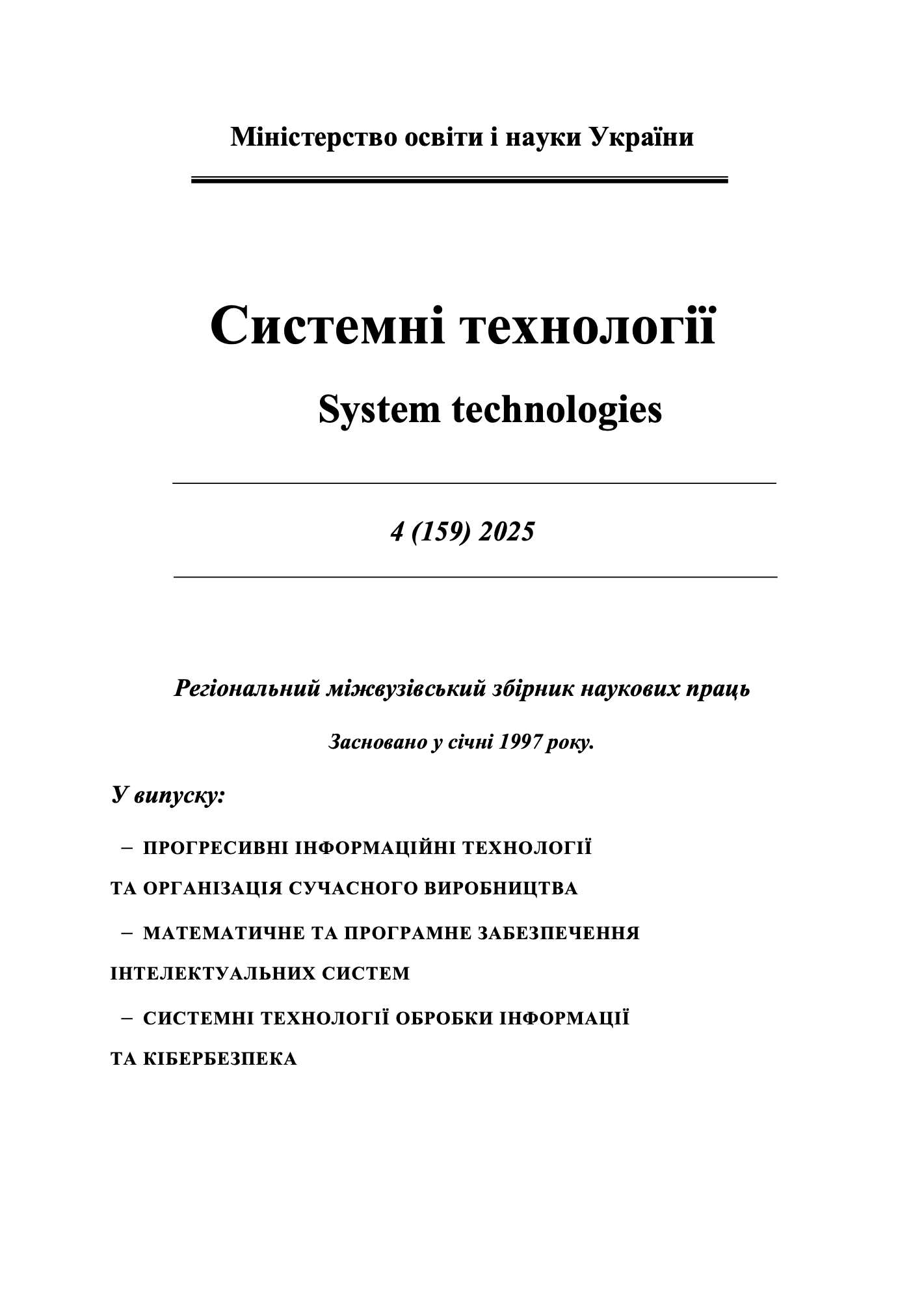Construction of a task-oriented database for electricity consumption dynamics forecasting
DOI:
https://doi.org/10.34185/1562-9945-4-159-2025-08Keywords:
task-oriented databases, datasets, software expert systems, data preprocessing, data transformation, electricity consumption forecasting, correlation analysis, periodic variables.Abstract
Modern software expert systems have the potential to optimize decision-making proc-esses in a wide array of industries, including energy, healthcare, and manufacturing. Never-theless, many machine learning–oriented approaches underestimate the significance of a ro-bust database architecture specifically tailored to each domain. This study aims to develop and validate an algorithmic approach to building a task-oriented (specialized) database structure for an expert system dedicated to forecasting electric power consumption. Real con-sumption measurements are paired with contextual data such as weather patterns, then trans-formed through systematic validation, cleaning, and encoding. Outlier detection and imputa-tion steps further reduce distortions stemming from incomplete or anomalous inputs, while an iterative feature selection process refines the pool of variables most relevant to predictive models. Unlike generic pipelines, the proposed approach incorporates a schema evolution stage, ensuring that newly identified indicators can be integrated without undermining exist-ing data integrity. Experimental application on a practical dataset combining technical power usage and external factors demonstrates improved resilience of forecasting results. By outlin-ing each stage of data preparation and emphasizing schema adaptability, the proposed meth-od supports high-precision predictions even under dynamically changing conditions. By con-tinually revisiting and adjusting the database, the system can adapt to evolving operational conditions, thus enhancing the accuracy of computational modules responsible for projecting consumption patterns. The findings underscore the importance of a specialized, domain-specific data foundation in realizing the full potential of expert systems.
References
Batini, C., Cappiello, C., Francalanci, C., & Maurino, A. (2009). Methodologies for data quality assessment and improvement. ACM Computing Surveys, 41(3), Article 16. DOI: 10.1145/1541880.1541883.
Zheng, A., & Casari, A. (2018). Feature engineering for machine learning: Principles and techniques for data scientists. O’Reilly Media.
James, G., Witten, D., Hastie, T., & Tibshirani, R. (2017). An introduction to statistical learning: With applications in R (2nd ed.). Springer.
Kimball, R., & Ross, M. (2013). The data warehouse toolkit: The definitive guide to di-mensional modeling (3rd ed.). Wiley.
Cao, L. (2010). Domain-driven data mining: Challenges and prospects. IEEE Transactions on Knowledge and Data Engineering, 22(6), 755–769.
Elmasri, R., & Navathe, S. B. (2016). Fundamentals of database systems (7th ed.). Pearson.
Crowe, M. K., & Laux, F. (2023). Graph data models and relational database technology. arXiv Preprint. https://arxiv.org/abs/2303.12376
Wang, R., Weng, J. та Huang, Z. (2018). A Comprehensive Survey on Data Preprocessing in Big Data Analytics. Journal of Big Data, 5(1), 22. DOI:10.1186/s40537-018-0139-3.
García, S., Fernández, A., Luengo, J., & Herrera, F. (2015). Data preprocessing in data mining. Springer.
Johannemann, J., Hadad, V., Athey, S., & Wager, S. (2019). Sufficient representations for categorical variables. arXiv Preprint. https://arxiv.org/abs/1908.09874
Kitagawa, G. (2024). A Triginometric Seasonal Component Model and its Application to Time Series with Two Types of Seasonality.
С.Ю. Гавриленко, В.О. Полторацький. Метод підвищення оперативності кла-сифікації даних за рахунок зменшення кореляції ознак. Системи управління, навігації та зв’язку. Збірник наукових праць, 2023.
Л.А. Люшенко, О.С. Монько, В.І. Сущук-Слюсаренко. Програмне рішення для про-гнозування динаміки споживання електричної енергії. Наука і техніка сьогодні, №5(33), 2024. DOI:10.52058/2786-6025-2024-5(33)-1258-1268.
Downloads
Published
Issue
Section
License
Copyright (c) 2025 System technologies

This work is licensed under a Creative Commons Attribution 4.0 International License.















